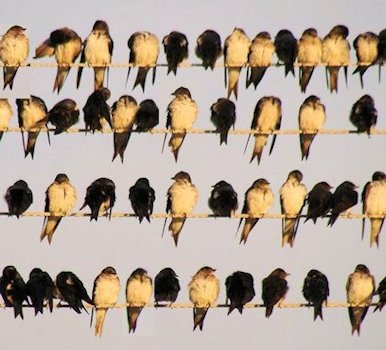
|
Birds Migrating in Flocks or Alone
Some species of birds are highly social during migration, moving in flocks that may stay together for the whole journey. Flocked migrants are the most conspicuous of migrating birds and are the most familiar to us. They are also easiest to watch because they are generally daytime migrants. In at least some cases, flocks of migrating birds consist of family groups. It is thought that young birds learn details of the routes of travel and layover sites from the more experienced adults, though this is surely not the sole reason that these diverse types of birds travel so often in groups. Flocked migrants include a wide variety of birds. Most of the large water birds travel in flocks, usually of impressive size. Among these are auks and puffins, cormorants, pelicans, ducks and geese, cranes, gulls, terns, sandpipers, and plovers. Often they congregate during migration at a few major stopover or staging areas where food is particularly abundant. Flocking is also common among many land birds, including doves, swifts, swallows, larks, pipits, crows, jays, waxwings, blackbirds, and starlings. An equally diverse array of species seems to migrate in a more solitary fashion, perhaps occasionally forming more or less aggregations with others of their kind, but basically winging it alone. These birds include grebes, most herons, rails, some hawks, owls, nightjars, cuckoos, hummingbirds, kingfishers, woodpeckers, most flycatchers, creepers, wrens, kinglets, thrushes, vireos, wood warblers, and orioles. |
| Tree and Barn Swallows form large flocks before migration. | |
| Return to Bird Migration and Navigation | |